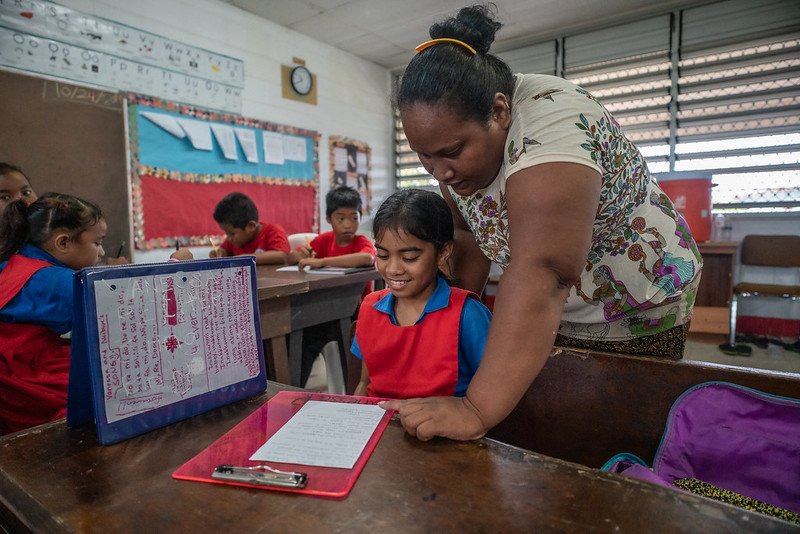NEW BRIEF EXPLORES SOCIAL PROTECTION FOR WOMEN AND GIRLS IN THE PACIFIC AND TIMOR-LESTE
New brief explores social protection for women and girls in the Pacific and Timor-Leste
As Pacific Island countries continue to strengthen their social protection systems, there is a growing awareness of how women and girls are included in and receive benefits from these systems.
A new Partnerships for Social Protection (P4SP) brief delves into this topic, exploring key findings and perspectives in the current literature.
Social protection for women and girls in the Pacific and Timor-Leste reveals there is a clear focus on women and social protection in the existing literature.
The brief draws from P4SP’s Evidence Review: Social Protection in the Pacific and Timor-Leste that examined 242 publications, of which 67 discuss gender and social protection.
In countries with social protection strategies or policies, these often prioritise responding to the vulnerabilities and disadvantages faced by women. This includes women being disproportionately affected by crises such as the COVID-19 pandemic and climate change impacts.
However, women in the Pacific and Timor-Leste receive fewer benefits and have less coverage than men within these systems.
“In the Pacific and Timor-Leste, women are more likely to work outside the formal sector than men, placing them in low-paying and precarious work which fails to make them eligible for social insurance,” the brief notes.
A positive trend has been the roll out of old age pensions.
“The expansion of universal government-financed old age pensions—seen widely across the Pacific and Timor-Leste—has been a key step towards better coverage for women, allowing older women to access pensions regardless of their employment history.”
Non-state social protection systems, such as traditional family, community or faith-based networks, also have gendered considerations. These systems are highly contextual and can produce varying impacts.
Some reported effects are positive. For example, during the COVID-19 pandemic, there was a surge in online bartering—described as a “social net and a modern twist on a traditional practice”.
Yet other impacts can exacerbate gender inequalities. “In Solomon Islands, for example, women—especially visible earners like market vendors—face greater pressure to share finances through cultural systems of giving, undermining their ability to save or invest in businesses.”
Of the 67 identified publications relating to gender and social protection, over half were published by multilateral organisations, while only 7 were published by Pacific-based organisations.
“This indicates that the evidence landscape is likely to reflect the priorities of multilateral organisations,” the brief says.
There needs to be more research on social protection for women and girls in the Pacific and Timor-Leste, the brief stresses.
“With the Pacific and Timor-Leste being highly vulnerable to the increasing impacts of climate change, it is essential to better understand the nexus between gender, climate change and social protection.”
“It is important that Pacific and Timorese researchers are supported to lead this work, as they are best placed to understand and communicate the contextual factors which will shape effective gender-responsive social protection programming in the region.”



